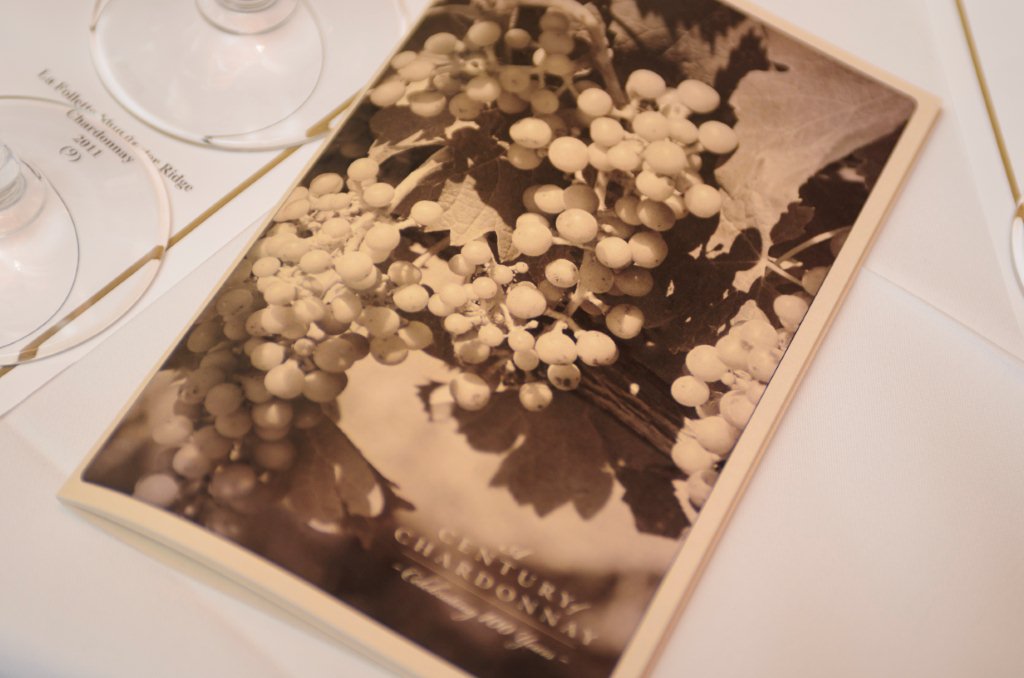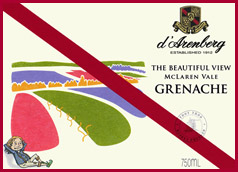n
This week saw two important celebrations for 100th birthdays in the wine world. First, an outstanding symposium at Wente Vineyards in Livermore on Monday celebrating the 100th anniversary of the Wente clone of Chardonnay. I was fortunate to have the opportunity to chair a panel of industry experts that included Phil Wente from the winery; Greg LaFollette, winemaker and owner of LaFollette wines; Stephane Vivier, winemaker for Hyde de Villaine wines; Nancy Sweet of the Foundation Plant Services at U.C. Davis; and long-time colleague Chuck Hayward of J.J. Buckley Fine Wines in Oakland. Our mission was to map the birth and evolution of the Wente clone of Chardonnay in California over the last century.
Before you leave this page to go microwave something or turn on the Weather Channel, allow me to explain as it’s become all too easy to bash anything remotely related to the Chardonnay grape. In fact, we’ve gotten just as good at berating Chardonnay as taxes, the dismal weather in the Sunset District of San Francisco during the summer, or how remarkably annoying Katie Perry’s voice is after a very short period of time. But all this fuss over the popularity of Chardonnay is a very recent thing. Consider for a moment that in 1960 there were only 260 acres of Chardonnay planted in the entire state of California. That’s right, 260 acres, or less than half a square mile for anyone doing the math. Further, the state agricultural census listed Chardonnay as a “miscellaneous” white grape until 1968. Mind you, a varietal bottled Chardonnay wasn’t even commercially sold until 1936. It was made by, you guessed, Ernest Wente.
It was the famous “Judgment of Paris” tasting in 1976 and the success of the 1973 Chateau Montelena Chardonnay that initially spurred the tremendous growth of Chardonnay plantings, much of which was comprised of the Wente clone or variations thereof. One could even argue that the most site specific grape in California from the 1970’s through the late 1980’s was Chardonnay because of the consistency of the plant material (as in the Wente clone). Today the Chardonnay world is very different indeed. As of 2010, there are over 95,000 acres planted in California, an increase of over 400 percent from those long ago days of the early 1960’s. Combine that with the factoid just recently released that the white wine market in the U.S. is now the largest wine market on the planet, and Chardonnay becomes even more important to our wine gestalt. In the end, we may complain about Chardonnay all day–but we simply cannot ignore it.
As for the symposium, it was a wonderful blend of Wente family history (truly one of the great families of California wine) with a lot of technical data including spider graphs (which always make me squint) about the morphology and evolution of the Wente clone through the years. The big surprise of the event was Chuck Hayward’s “CSI” work on uncovering how the Wente clone got to Western Australia from California in 1955. The answer is via Dr. Harold Olmo of U.C. Davis clonal research fame, who OK’d the initial shipment of vine cuttings and who also went on to help establish several of the best cool climate growing regions in that state.
Also notable were comments made by fellow Masters and good friends Peter Granoff and Sally Mohr. When asked about sommeliers and why they need to consider Chardonnay for their programs, Peter responded by saying that sommeliers need to “put their egos aside” and just do their jobs. Sally Mohr responded by pointing out that while everyone makes such a fuss over white Burgundy, we’re at the point now that where the best Chardonnay vineyards in California should be considered the equal of their Burgundian counterparts in terms of wine quality. I completely agree with both.
The entire symposium can be viewed in three parts via U-Stream:
The second big birthday bash happened this past Tuesday night at the Old Mint building in San Francisco. A group of more than a hundred gathered to celebrate the 100th anniversary of d’Arenberg, one of Australia’s most unique and iconic wineries. If not familiar, the winery was founded in 1912 by Joseph Osborn, a teetotaler and then director of Thomas Hardy and Sons winery. Osborn purchased the 60 acre Milton Vineyards in the hills just north of the townships of Gloucester and Bellevue, now known as McLaren Vale. Fruit was sold to local wineries until the construction of a cellar in 1928. In 1943 Frank’s son, Francis d’Arenberg Osborn (known as “d’Arry”), returned from school at age 16 to help his father run the business. d’Arry eventually assumed management in 1957, and in 1959 launched his own label called d’Arenberg, named after his mother Frances Helena d’Arenberg. The d’Arenberg wines quickly started winning medals in major competitions and within 20 years the winery gained both national and international recognition. The rest, as they say, is history.
Today Chester Osborn, the fourth generation, oversees winemaking duties. The vineyards are still located in McLaren Vale about an hour’s drive from Adelaide. The climate, while definitely hot during summer months, is all about diurnal shift as the nights are much cooler due to the proximity to the ocean. That makes for wines with high natural acidity regardless of the ripeness level–and high acidity means good balance and longevity, both hallmarks of the d’Arenberg wines.
Chester makes as many as 16 different wines in any one vintage, from a Pinot Meunier-based sparkler all the way to a tawny port-styled fortified sticky. My favorites over the years have been the Riesling called the “Dry Dam,” the old vines Grenache called the “Custodian,” and the reserve Cabernet called “Dead Arm.” It goes without saying that all the d’Arenberg wines have quirky names with a story behind each. Beyond that, Chester is all about sustainable practices in the vineyard, and minimal–and I do mean minimal–intervention in the winery. In terms of the latter, only traditional basket presses are used and the wines are rarely, if ever, racked during barrel aging. That’s because Chester believes a certain amount of reduction is needed to offset the natural oxidation that a barrel environment provides.
The event started off with a tasting of over 40 wines including older vintages as well as newly released Shiraz and Grenache vineyard designates from the 2010 vintage. Here are notes on my favorites:
Older Vintages
2004 “Dry Dam” Riesling: quintessential Aussie light saber Riesling with intense lime and mineral flavors and atom-smashing acidity.
2002 “Thieving Magpie” Shiraz-Viognier: projectile blueberry and violet plasma. Amazing aromatics with a seamless, spicy, and delicious palate. Hedonistic.
2001 “Galvo Garage”: a Cabernet blend with Merlot and Cabernet Franc. There’s a common notion that Aussie wines don’t age well and that the Cabernets are second rate. I think we can toss both ideas out in the backyard next to the square wheel and the eight track player. At 11 years young the Galvo is vibrant, harmonious, and just starting to show its stuff.
New Releases
2010 “The Beautiful View” Grenache: wild strawberry jam meets a pepper grinder beneath a grove of eucalyptus trees. Rich, juicy, spicy, and savory.
2010 “The Vociferate Dipsomaniac” Shiraz: an immensely concentrated red with dark fruit compote, exotic Asian spices, and savory herb notes. Think Humvee in ballet slippers. Shameless. Take cover.
Cheers! Happy 100th to both the Wente clone and d’Arenberg. Here’s to 100 more!
nn

